
Trinity Lx
Model Numbers: Lx150-800
Version Date: 2011-03-11
INSTALLATION AND OPERATION INSTRUCTIONS FOR
TRINITY LX SERIES BOILERS AND WATER HEATERS
This manual to be read in conjunction with the following documents which
provide specific instructions for controller setup, plumbing and wiring:
Appendix A - Controller and Touchscreen Display Instructions
Appendix B - Boiler Applications: Plumbing and Wiring
Appendix C - Water Heater Applications: Plumbing and Wiring
TABLE OF CONTENTS
1.0 INTRODUCTION................................................................................................................3
2
.0 SPECIFICATIONS ..............................................................................................................6
3
.0 APPLIANCE LOCATION...................................................................................................8
4
.0 GENERAL VENTING.......................................................................................................13
5
.0 VENT AND AIR-INTAKE TERMINATION CLEARANCES........................................28
6
.0 CONDENSATE DRAIN....................................................................................................33
7
.0 INSTALLING GAS PIPING..............................................................................................34
8
.0 LIGHTING THE APPLIANCE .........................................................................................36
9
.0 GAS VALVE AND BURNER SET-UP ............................................................................38
10.0 WIRING SCHEMATICS...................................................................................................45
11.0 INSTALLATION CHECKLIST........................................................................................49
12.0 ANNUAL MAINTENANCE AND INSPECTION...........................................................51
13.0 PARTS LIST ......................................................................................................................53
14.0 TROUBLESHOOTING .....................................................................................................65
HAZARD SYMBOLS AND DEFINITIONS
Danger Sign: Indicates a hazardous situation which, if not avoided, wil
l
result in serious injury or death.
Warning Sign: Indicates a hazardous situation which, if not avoided,
could result in serious injury or death.
Caution Sign plus Safety Alert Symbol: Indicates a hazardous situatio
n
which, if not avoided, could result in minor or moderate injury.
Caution Sign without Safety Alert Symbol: Indicates a hazardous
situation which, if not avoided, could result in property damage.
Notice Sign: Indicates a hazardous situation which, if not avoided,
could result in property damage.
This Appliance must be installed by a licensed and trained Heating
Technician or the Warranty is Void. Failure to properly install this
unit may result in property damage, serious injury to occupants, or possibly death.
®
NEW FEATURES
Second Central Heat Input
Internal Lead-Lag Control
System Sensor
Modulation Sensor Alternatives
Warm Weather Shutdown
BONUS
Night Time Setback
(Time of Day)
Lx800 Only
Lx800

Trinity Lx │Installation and Operation Instructions Lx Series
2
Read Before Proceeding
If you do not follow these instructions exactly, a fire or explosion may result causing
property damage, serious injury or death.
FOR YOUR SAFETY, READ BEFORE OPERATING_
A) This appliance does not have a pilot. It is equipped with an ignition device which automatically lights the
burner. Do not try to light the burner by hand.
B) BEFORE OPERATING smell all around the appliance area for gas. Be sure to smell next to the floor
because some gas is heavier than air and will settle on the floor.
WHAT TO DO IF YOU SMELL GAS:
• Do not try to light any appliance.
• Do not touch any electric switch.
• Do not use any phone in your building.
• Immediately call your gas supplier from a neighbor's phone. Follow the gas supplier's instructions.
• If you cannot reach your gas supplier, call the fire department.
C) Use only your hand to push in or turn the gas control knob. Never use tools. If the knob will not push in or
turn by hand, don't try to repair it, call a qualified service technician. Force or attempted repair may result
in a fire or explosion.
D) Do not use this appliance if any part has been under water. Immediately call a qualified service technician
to inspect the appliance and to replace any part of the control system and any gas control which has
been under water.
OPERATING INSTRUCTIONS_
1. STOP! Read the safety information above very carefully.
2. Set the thermostat to lowest setting. Turn off all electric power to the appliance.
3. This appliance does not have a pilot. It is equipped with an ignition device which automatically lights the
burner. Do not try to light the burner by hand.
4. Turn the manual gas valve to the OFF position. Remove front access panel.
5. Wait five (5) minutes to clear out any gas. Then smell for gas, including near the floor. If you smell gas,
STOP! Follow “B” in the safety information above. If you don't smell gas, go to the next step.
6. Turn the manual gas valve ON. Wait an additional five (5) minutes smelling for gas.
7. Replace the front access panel.
8. Set thermostat to highest setting. Turn on all electric power to the appliance.
9. Ignition sequence is automatic. Combustion will occur after a brief fan purge.
10. If ignition does not occur, follow the instructions “To Turn Off Gas To Appliance” and call your service
technician or gas supplier.
TO TURN OFF GAS TO THE APPLIANCE_
1. STOP! Read the safety information above very carefully.
2. Turn off all electric power to the appliance
3. Turn the manual gas valve to the OFF position
Crystalline Silica - Certain components confined in the combustion chamber may
contain this potential carcinogen. Improper installation, adjustment, alteration, service or
maintenance can cause property damage, serious injury (exposure to hazardous materials) or death. Refer to
Section 12.0 for information on handling instructions and recommended personal protective equipment.
Installation and service must be performed by a qualified installer, service agency or the gas supplier (who must
read and follow the supplied instructions before installing, servicing, or removing this appliance. This appliance
contains materials that have been identified as carcinogenic, or possibly carcinogenic, to humans).
Void Warranty - This Appliance must have water flowing through it whenever the
burner is on or it will damage the unit and void the warranty. Failure to follow these
instructions may result in serious injury or death.

Lx Series Installation and Operation Instructions │Trinity Lx
3
1.0 INTRODUCTION
Installation and Operation Instructions – These instructions apply to the installation
and operation of Trinity Lx150-800 units and covers instructions that are common-to-
both boiler and water heater applications. Troubleshooting instructions for the controller and display are
covered in Appendix A. Appliance-specific plumbing and wiring instructions for Boilers and Water Heaters
are covered in Appendix B and C, respectively.
Terminology – The following terms in the instruction manuals are used to differentiate between which
instructions are common-to-both and which are appliance-specific. The term "APPLIANCE" applies to both
kinds of water heating appliances (boilers and water heaters) and is used when conveying instructions which
are common-to-both. The term "BOILER" or "WATER HEATER" is used when conveying instructions
which are appliance-specific or specific to one or the other, but not both.
Table 1-1 Instruction Manuals
Appliance Model No.
Common-to-Both
(Trinity Lx Series)
Appliance-Specific
(Application Based)
Boiler Lx150-800
Installation
and Operation
Instructions
Appendix A - Controller
and Touchscreen
Display Instructions
Appendix B
Boiler Applications:
Plumbing and Wiring
Instructions
n/a
Water
Heater
Lx200-800
Installation
and Operation
Instructions
Appendix A -Controller
and Touchscreen
Display Instructions
n/a
Appendix C
Water Heating
Applications:
Plumbing and Wiring
Instructions
Notes
1
A conversion kit is required to convert models Lx150-400 so they will safely operate with Propane Gas.
2
No conversion kit is required to operate the Lx500 on Propane (LP), see Section 9.0 for specific instructions.
3
Do not convert the Lx600, Lx700 or Lx800 to Propane (LP). Operate with Natural Gas only.
General Installation Requirements
The installation of your NTI Trinity Lx gas appliance must conform to the requirements of this manual, your
local authority, and the National Fuel Gas Code ANSI Z223.1 and or CAN/CGA B149 Installation Codes.
Where required by the Authority, the installation must conform to the standard for “Controls and Safety Devices
for Automatically Fired Boilers ANSI/ASME CSD-1.
This document pertains to the correct installation and operation of NTI Trinity boiler models Lx150, Lx150E,
Lx200, Lx300, Lx400, Lx500, Lx600, Lx700 and Lx800. The instructions detailed in this document supersede
any and all previous instructions provided by NTI, written or otherwise. Each unit is provided with various
manuals and a Natural to LP Conversion Kit for applicable models. Refer to notes and list of Instruction
Manuals in Table 1-1.
Lx 600-700-800 models are not approved for operation with Propane (LP Gas). Failure to
comply with these instructions will result in property damage, serious injury or death.
Read and understand this entire document prior to proceeding with the installation of the
Trinity Lx. Failure to follow the instructions outlined in this document will result in
property damage, serious injury or death.
User Responsibilities
This appliance must be installed and serviced by a qualified installer or service technician. This appliance must
be serviced and inspected annually when operating in normal residential applications. Demanding applications
or extreme conditions (i.e. commercial) may require more frequent service and inspection. As the User/Owner of
this equipment, you are responsible for ensuring the maintenance is performed at the required intervals.
Failure to have the appliance properly serviced and inspected on a regular basis by a
qualified service technician may result in property damage, serious injury or death.
Failure to keep the Vent and Combustion Air Intake clear of ice, snow, and other
debris may result in property damage, serious injury, or death.

Trinity Lx │Installation and Operation Instructions Lx Series
4
Installer Responsibilities
A qualified installer is a licensed person who has appropriate training and a working knowledge of the applicable
codes, regulations, tools, equipment and methods necessary to install a boiler or water heater. The Installer
assumes all responsibility for a safe installation and that it meets the requirements of the Trinity instruction
manuals, as well as National and local codes. It is also the installer’s responsibility to inform the User/Owner of
their obligation with respect to the description under “User Responsibilities”. Failure to follow this warning
could result in fire, serious injury, or death.
ATTENTION: LIQUEFIED PETROLEUM (LP) PROPANE
The Trinity Lx is factory set to operate with Natural Gas. BEFORE OPERATING WITH PROPANE, the
specified LP Conversion Kit must be installed to convert the appliance so it will operate safely with LP
Propane. The Lx600, Lx700 and Lx800 operate with Natural Gas only; DO NOT convert these models to
Propane. Listed below are the NTI applicable models and their corresponding Natural to LP Propane
Conversion Kit number.
Liquefied Petroleum (LP) propane gas is heavier than air; therefore, it is imperative that your Trinity Lx
appliance is not installed in a pit or similar location that will permit heavier than air gas to collect.
Local Codes may require appliances fueled with LP gas be provided with an approved means of
removing unburned gases from the room. Check your local codes for this requirement.
Natural to LP Propane Conversion Kit_
NTI Series Model Number Kit Number
Trinity Lx 150, 150E, 200, 300 82650-1
Trinity Lx 400 83017-1
Trinity Lx 500 84386-1
Failure to use the appropriate Natural to LP Conversion Kit when operating the Trinity
Lx with Propane will result in extremely dangerous burner operation leading to property
damage, serious injury or death. Refer to section titled ATTENTION: LIQUEFIED PETROLEUM (LP)
PROPANE for applicable models and corresponding conversion kit numbers.
Appliance Vent / Air-Intake Piping
The Trinity Lx is a “Direct Vent” appliance requiring a “Special Venting System”. Vent
and Combustion-Air Intake piping must be piped to the outdoors, using the vent material
and rules outlined in these instructions. Failure to follow instructions will result in serious injury or death.
New Features
Second Central Heat Input - The Trinity Lx can be used as a stand alone unit with a lone heat input or with two
heat inputs. To configure units for two heat inputs refer to "Second Central Heat Input vs Multiple Boiler
Application Settings" in Appendix A and "Stand Alone Boiler Applications" in Appendix B.
Internal Lead-Lag Control - The Trinity Lx controller has the internal capacity to stage or lead-lag up to 8
boilers or water heaters configured in a cascade by "daisy chaining" the controller units together. Refer to
"Second Central Heat Input vs Multiple Boiler Application Settings" in Appendix A for controller setup and
Appendix B or C for application specific plumbing and wiring instructions.
Modbus Address - In Lead Lag installations, each controller’s Modbus Address must be
assigned by the installer. Refer to "System Identification & Access" in Appendix A.
System Sensor - Each LX is provided with an optional system water temperature sensor that allows the system
supply or return temperature to be regulated directly. Refer to "Low Voltage Connections" in Appendix B. Not
used for Water Heater Applications.
Modulation Sensor Alternatives - New LX models provide increased accuracy and control of a unit’s water
temperature by allowing installers to select the desired modulation sensor for a given demand. Refer to
"Modulation Sensor" in Appendix B or C.
Warm Weather Shutdown - When enabled, this feature will "prevent" Central Heat operation when the outdoor
temperature exceeds the WWSD setpoint and "permit" Central Heat operation if the outdoor temperature drops
below the WWSD setpoint by 4
o
F. For set up details refer to the "Warm Weather Shutdown Configuration" in
Appendix A - Controller and Touchscreen Display. Not used for water heater applications.

Lx Series Installation and Operation Instructions │Trinity Lx
5
IN THE STATE OF MASSACHUSETTS ONLY
(a) For all horizontally vented gas fueled equipment installed in every dwelling, building or structure used in
whole or in part for residential purposes, including those owned and operated by the Commonwealth and
where the side wall exhaust vent termination is less than seven (7) feet above finished grade in the area of the
venting, including but not limited to decks and porches, the following requirements shall be satisfied:
1. INSTALLATION OF CARBON MONOXIDE DETECTORS At the time of installation of the side wall
horizontal vented gas fueled equipment, the installing plumber or gas fitter shall observe that a hard wired
carbon monoxide detector with an alarm and battery back-up is installed on the floor level where the gas
equipment is to be installed and on each additional level of the dwelling, building or structure served by
the equipment. It shall be the responsibility of the property owner to secure the services of qualified
licensed professionals for the installation of hard wired carbon monoxide detectors.
a. In the event that the side wall horizontally vented gas fueled equipment is installed in a crawl space or
an attic, the hard wired carbon monoxide detector with alarm and battery back-up may be installed on
the next adjacent floor level.
b. In the event that the requirements of this subdivision can not be met at the time of completion of
installation, the owner shall have a period of 30 days to comply with the above requirements;
provided, however, that during said 30 day period a battery operated carbon monoxide detector with
an alarm shall be installed.
2. APPROVED CARBON MONOXIDE DETECTORS Each carbon monoxide detector as required in
accordance with the above provisions shall comply with NFPA 720 and be ANSI/UL 2034 listed and IAS
certified.
3. SIGNAGE A metal or plastic identification plate shall be permanently mounted to the exterior of the
building at a minimum height of eight (8) feet above grade directly in line with the exhaust vent terminal
for the horizontally vented gas fueled heating appliance or equipment. The sign shall read, in print size no
less than one-half (1/2) inch in size, “GAS VENT DIRECTLY BELOW. KEEP CLEAR OF ALL
OBSTRUCTIONS” (plate included with appliance).
4. INSPECTION The state or local gas inspector of the side wall horizontally vented gas fueled equipment
shall not approve the installation unless, upon inspection, the inspector observes carbon monoxide
detectors and signage installed in accordance with the provisions of 248 CMR 5.08(2)(a)1 through 4.
(b) EXEMPTIONS: The following equipment is exempt from 248 CMR 5.08(2)(a)1 through 4:
1. The equipment listed in Chapter 10 entitled “Equipment Not Required To Be Vented” in the most current
edition of NFPA 54 as adopted by the Board; and
2. Product Approved side wall horizontally vented gas fueled equipment installed in a room or structure
separate from the dwelling, building or structure used in whole or in part for residential purposes.
(c) MANUFACTURER REQUIREMENTS – GAS EQUIPMENT VENTING SYSTEM PROVIDED:
When the manufacturer of Product Approved side wall horizontally vented gas equipment provides a venting
system design or venting system components with the equipment, the instructions provided by the
manufacturer for installation of the equipment and the venting system shall include:
1. Detailed instructions for installation of the venting system design or the venting system components; and
2. A complete parts list for the venting system design or venting system.
(d) MANUFACTURER REQUIREMENTS – GAS EQUIPMENT VENTING SYSTEM NOT PROVIDED:
When the manufacturer of a Product Approved side wall horizontally vented gas fueled equipment does not
provide the parts for venting the flue gases, but identifies “special venting systems”, the following requirements
shall be satisfied by the manufacturer.

Trinity Lx │Installation and Operation Instructions Lx Series
6
2.0 SPECIFICATIONS
Table 2-1 Specifications Lx150-300
DESCRIPTION Lx150 Lx150E Lx200 Lx300
CSA Input Modulation
1
btu/hr [kw]
30,000-150,000
2
[8.8-44.0]
30,000-150,000
[8.8-44.0]
40,000-199,000
[11.7-58.3]
55,000-275,000
[16.1-80.5]
DOE Heating Capacity
1, 3
btu/hr [kw]
136,000
[39.8]
139,000
[40.7]
182,000
[53.3]
251,000
[73.5]
Net I=B=R Rating
1,3
btu/hr [kw]
118,000
[34.8]
121,000
[35.4]
158,000
[46.3]
213,000
[62.4]
DOE AFUE
3
% 95.1 97.0 95.1 95.1
Recovery Rating @
100
o
F Rise, gal/hr
- - 224 310
Water Connections - NPT, in. 1
4
1 1 1-1/4
Gas Connection - NPT, in. 1/2 1/2 1/2 1/2
Vent/Air-Intake
Pipe
Dia.
respectively, in. [mm]
5
3
7
or 4
[ 76 or 102]
3
7
or 4
[ 76 or 102]
3
7
or 4
[ 76 or 102]
4 or 6
[102 or 152]
Vent/Air-Intake,
Max. Length, ft. [m]
105
7
[32]
105
7
[32]
105
7
[32]
100
[30.5]
Dimensions H x W x D
in. [mm]
29.5x17x18.5
[749x432x470]
29.5x17x18.5
[749x432x470]
29.5x17x18.5
[749x432x470]
36x17x21.5
[915x432x546]
Approx. Appliance Weight
with Water, lbs [kg]
100 [45.3] 125 [56.7] 125 [56.7] 180 [81.6]
Electrical Rating 120V / 1 Phase / 60 Hz / 12A
Table 2-2 Specifications Lx400-800
DESCRIPTION Lx400 Lx500 Lx600
6
Lx700
6
Lx800
6
CSA Input Modulation
1
btu/hr [kw]
75,000-399,000
[21.9-117]
100,000-500,000
[29.3-146]
120,000-600,000
[35.1-176]
160,000-700,000
[46.9-205]
160,000-800,000
[46.9-234]
Heating Capacity
1
btu/hr [kw]
374,000
[109.6]
468,000
[137]
562,000
[164]
655,000
[192]
749,000
[219.5]
Steady State Efficiency Rating
% 94.0 94.0 94.0 94.0 94.0
Recovery Rating @
100
o
F Rise, gal/hr
450 564 677 789 902
Water Connections - NPT, in. 1-1/4 2 2 2 2
Gas Connection - NPT, in. 3/4 3/4 1 1 1
Vent/Air-Intake
Pipe
Dia.
respectively, in. [mm]
5
4 or 6
[102 or 152]
4
9
or 6
[102 or 152]
4
9
or 6
[102 or 152]
4
8
or 6
[102 or 152]
4
8
or 6
[102 or 152]
Vent/Air-Intake,
Max. Length, ft. [m]
100
[30.5]
100
9
[30.5]
100
9
[30.5]
100
[30.5]
100
[30.5]
Dimensions H x W x D
in. [mm]
36x17x 24
[915x432x610]
43x17x 32.5
[1092x432x825]
37x17x 47.5
[938x432x1206]
37x17x 63.5
[938
x 432 x 1613]
37x17x
63.5
[938
x 432 x 1613]
Approx. Appliance Weight
with Water, lbs [kg]
225 [102] 320 [145] 380 [172] 425 [193] 475 [215]
Electrical Rating 120V / 1 Phase / 60 Hz / 12A
Notes for Tables 2-1 and 2-2:
1
Listed Input and Output ratings are at minimum vent lengths at Sea Level. Numbers will be lower with longer venting
and/or altitudes greater then 2000 feet [610 m].
2
The maximum output when operating on LP-Gas is limited to 145,000 Btu/hr [42.5 kW].
3
Based on rating plate input capacities, using standard test procedures prescribed by the U.S. Department of Energy.
Ratings have been confirmed by AHRI (GAMA), excluding Lx400 and Lx800.
4
Units sold in Canada are 3/4” NPT.
5
Trinity Lx require a special venting system, use only vent materials and methods detailed in these instructions.
6
Models Lx600, Lx700 and Lx800 operate with Natural Gas only.
7
Models Lx150-200, when using 3" venting on LP, max. equivalent length = 50 feet.
8
Only 6” exhaust vent is permissible for the Lx700 and Lx800. Air intake pipe can be 4” or 6”.
9
Models Lx500 and Lx600 are limited to 30’ of 4” or 90’ of 6”exhaust venting when using the Indoor Combustion Air Kit.

Lx Series Installation and Operation Instructions │Trinity Lx
7
High Altitude Operation
The Trinity is designed to operate at its maximum listed capacity in installations less than or equal to 2000 ft
[610 m] above Sea Level. Since the density of air decreases as elevation increases, maximum specified capacity
should be de-rated for elevations above 2000 ft [610 m] in accordance with Table 2-3.
Table 2-3 De-rate % for High Altitudes
Elevations 2000 ft [610 m] 3000 ft [914 m] 4000 ft [1219 m] 4500 ft [1372 m] 5000 ft [1524 m]
In Canada
1
de-rate by 5% de-rate by 5% de-rate by 5% de-rate by 5% de-rate % may vary
In USA
2
- de-rate by 4% de-rate by 8% - de-rate by 12%
Notes:
1
Canada: Altitudes between 2000-4500 ft [610-1372 m], de-rate by 5%. Consult local authorities for de-rating capacities
for altitudes above 4500 ft [1372 m].
2
USA: De-rate capacity by 4% for every 1000 ft [305 m] over 2000 ft [610 m].
Combustion – At elevations above 2000 feet, the combustion of the appliance must be
checked with a calibrated combustion analyzer to ensure safe and reliable operation. It is
the Installers responsibility
to check the combustion and to adjust the combustion in accordance to
Section 9.0. Failure to follow these instructions may result in property damage, serious injury, or death.

Trinity Lx │Installation and Operation Instructions Lx Series
8
3.0 APPLIANCE LOCATION
In all cases, the Trinity Lx must be installed indoors in a dry location where the ambient temperature must be
maintained above freezing and below 100°F [38°C]. Gas components must be protected from dripping, spraying
water, or rain during operation and servicing. Consider the proximity of system piping, gas and electrical supply,
condensate disposal drain, and proximity to vent termination when determining the best appliance location.
Water or flood damaged components must be replaced immediately with new factory-
approved components as failure to do so may result in fire, serious injury, or death.
Floor Mounting
The Trinity Lx can be mounted directly on combustible flooring, with the exception of carpeting. Installing the
appliance on carpeting is not permissible. Ensure the appliance is mounted above any anticipated flood level.
Models Lx150-400 come equipped with stationary, low profile legs. Lx500-800 models include factory
supplied/field installed leveling legs. Once the unit is removed from the pallet, thread the leveling legs into the
allocated threaded inserts in the bottom of the unit.
Appliance Area Ventilation Air Openings
If appliance area clearances are less then the recommended clearances specified in Table 3-1, the appliance area
must be ventilated. Each ventilation air opening must meet the minimum requirements of 1 in
2
per 1000 Btu/hr,
but not less then 100 in
2
. The lower ventilation opening must be located within 6” of the floor while the upper
opening must be located 6” from the top of the space. The Lx500-800 has an optional Indoor Combustion Air
Kit that can be installed in lieu of direct vent air intake piping. Note that the Indoor Combustion Air option is not
to be used in conjunction with closet or alcove installations. See "Mechanical Room Installations" below.
If the "Appliance Area" does not meet all of the recommended clearances listed in Table
3-1, it is considered a Closet or Alcove. The use of PVC venting (exhaust and air-intake)
is not permitted within the Closet or Alcove. See Table 4-3 for a list of approved materials.
Closet Installations
For closet installations, it is necessary to provide two ventilation air openings as shown in Figure 3-1(a), (b) and
(c), each providing a minimum area equal to 1 in
2
per 1000 Btu/hr, but not less then 100 in
2
and within 6” of the
top and bottom of the closet door. See Table 3-1for minimum recommended clearances.
Alcove Installations
Alcove installations have the same minimum clearances as closet installations, except the front must be
completely open to the room at a distance no greater then 18” [457 mm] from the front of the appliance and the
room is at least three (3) times the size of the alcove. Provided these conditions are met, the appliance requires
no extra ventilation air openings to the space. See Table 3-1for minimum recommended clearances.
Residential Garage Installations
When installed in a residential garage, mount the appliance a minimum of 18” [457 mm] above the floor. Locate
or protect the appliance so it cannot be damaged by a moving vehicle. Check with your local authorities for
other possible regulations pertaining to the installation of an appliance in a garage.
Mechanical Room Installations (Commercial)
The Trinity Lx500-800 is certified for use as a Direct Vent System, where flue gas and combustion air piping are
connected directly to the appliance. In addition, it is the only Lx model certified for use with an Indoor
Combustion Air System where flue gas piping is connected directly to the appliance, but combustion air is
drawn directly from the room. Room supplied combustion air systems are subject to additional codes
requirements such as pre-ignition interlocks with motorized dampers or auxiliary proving circuits when
operating in rooms with mechanical exhaust fans. See Table 4-1 for combustion air contamination sources to
avoid, Table 4-5 for a list of design considerations and installation guidelines, and Figure 4-13 for Kit details.
Wall Mounting Installations (Optional)
Lx150-400 models are shipped with wall mounting brackets to provide installers with the option of wall
mounting the appliance. The Lx500-800 are not available as a wall mountable unit. Refer to Figures 3-3(a) and
3-3(b) for instructions and illustrations on wall mounting applicable models. Note that Water Heaters require
"Mandatory Wall Mounting Protection". Refer to Section 1.0 in Appendix C, "Water Heater Applications:
Plumbing & Wiring Instructions" for further details.

Lx Series Installation and Operation Instructions │Trinity Lx
9
Figure 3-1(a) Lx150-200 Models
Closet Installation, Minimum Clearances
Figure 3-1(b) Lx300-400 Models
Closet Installation, Minimum Clearances
Closet/alcove installations in US and Canada require approved CPVC vent and air-inlet
pipe, fittings, cements and primers (Table 4-3).
Ventilation Air Openings
are not required if the
appliance area meets
the listed Recommended
Clearances in Table 3-1.
Top 12” [305 mm]
6” [152 mm] max. above vent opening
Front 6” [152 mm] - Boilers
Front 36” [915 mm] - Water Heaters
Left Side 12” [305 mm]
Right Side 12” [305 mm]
6” [152 mm] max. below vent opening
Ventilation Air Opening
1 in
2
per 1000 Btu/hr, min. 100 in
2
Ventilation Air Opening
1 in
2
per 1000 Btu/hr, min. 100 in
2
Removable Surface or Closet Door
Piping must be CPVC
1” [25 mm] clearance for
hot water and vent pipes
Ventilation Air Openings
are not required if the
appliance area meets
the listed Recommended
Clearances in Table 3-1.
Top 12” [305 mm]
Removable Surface or Closet Door
Ventilation Air Opening
1 in
2
per 1000 Btu/hr, min. 100 in
2
Ventilation Air Opening
1 in
2
per 1000 Btu/hr, min. 100 in
2
6” [152 mm] max. above vent opening
6” [152 mm] max. below vent opening
Right Side 4” [102 mm]
Left Side 12” [305 mm]
Front 6” [152 mm] - Boilers
Front 36” [915 mm] - Water Heaters
Piping must be CPVC
1” [25 mm] clearance for
hot water and vent pipes

Trinity Lx │Installation and Operation Instructions Lx Series
10
Figure 3-1(c) Lx500-800 Models
Closet Installation, Minimum Clearances
Table 3-1 Minimum Clearances for Installation and Service
Dimensions - inches [mm]
Model No. Clearances
Front Top Left Side Right Side Rear Flue Pipe
Minimum 24 [610]
1,3
12 [305] 12 [305] 4 [102] 0 1 [25]
Trinity Lx150-200
Recommended 24 [610] 24 [610] 24 [610]
2
4 [102] 0 1 [25]
Minimum 24 [610]
1,3
12 [305] 12 [305] 12 [305] 0 1 [25]
Trinity Lx300-400
Recommended 24 [610] 24 [610] 24 [610]
2
12 [305] 0 1 [25]
Minimum 24 [610]
1,3
12 [305] 24 [610] 4 [102] 14 [356] 1 [25]
Trinity Lx500-800
4
Recommended 24 [610] 24 [610] 30 [762] 24 [610] 18 [458] 1 [25]
Notes:
1
6” if surface is removable allowing 24” [610 mm] clearance (i.e. closet installation). See Ventilation Air Opening
dimensions in Figure 3-1.
2
Clearances can be as low as 12” [305 mm] if the right side has a clearance of 24” [610 mm].
3
Water Heaters require a minimum clearance of 36” [915 mm] in front for burner access (Lx200-800).
4
For the Lx500-800, ensure rear of unit is accessible for wiring and flue gas testing.
Front 24” [610 mm] - Boilers
Front 36”
[
915 mm
]
- Water Heaters
Left Side 24”
[610 mm]
Right Side
4” [102 mm]
6” [152 mm]
max. below
vent openin
g
Top 12”
[305 mm]
1” [25 mm]
clearance for
hot water and
vent pipes
6” [152 mm]
max. above
vent openin
g
Removable Surface
or Closet Door
Ventilation Air Opening
1 in
2
per 1000 Btu/hr,
min. 100 in
2
Ventilation Air Opening
1 in
2
per 1000 Btu/hr,
min. 100 in
2
V
entilation Air Openings -
Openings are not required if
the appliance area meets the
Recommended Clearances in
Table 3-1.
Rear 14”
[356 mm]
Access - Ensure rear of unit is
accessible for wiring and flue
g
as testin
g
. See Table 3-1.
Model Lx800
shown

Lx Series Installation and Operation Instructions │Trinity Lx
11
n
Figure 3-2(a) Lx150-200 Models
Wall Mounting Installations
n Remove the upper wall mount bracket from the
back of the appliance.
Failure to follow instructions may
result in fire, serious injury, or death.
This unit requires two people to lift it
or damage and injury may result.
o Secure the upper wall mount bracket to a solid
wall using field supplied lag screws (anchors
when mounting on a concrete wall) that are
adequate to support the weight of the
appliance. Ensure the bracket is mounted in
the level position. Refer to Table 2-1
Specifications for appliance weight.
p Mount the appliance to the bracket by aligning
the slots in the back of the appliance with the
hooks protruding from the wall bracket. The
top of the slots must rest at the bottom of the
groove in the hooks of the wall mount bracket.
q Pull the bottom of the unit away from the wall
to allow the installation of the lower wall
mount bracket (included with appliance). The
bracket will snap into place using the slots
provided in the bottom of the unit (ensure the
snaps lock into place, once installed the bracket
should not be easily removed).
Water Heaters require "Mandatory Wall Mounting Protection". Refer to Section 1.0 in
Appendix C, "Water Heater Applications:
Plumbing & Wiring Instructions".
p
q
o
Ensure that the top of each
slot rests on the bottom of the
grooves in the wall bracket.
Bottom Bracket is in
Lx Installation Kit Box

Trinity Lx │Installation and Operation Instructions Lx Series
12
Figure 3-2(b) Lx300-400 Models
Wall Mounting Installations
n While leaving the upper bracket intact (A),
remove the wall mount bracket attached to the
Failure to follow instructions may
result in fire, serious injury, or death.
This unit requires two people to lift it
or damage and injury may result.
bottom-back of the appliance (B). Save the
mounting hardware for Step 4.
o
Secure the wall mount bracket, removed from
the bottom of the boiler in Step 1, to a solid
wall using field supplied lag screws (anchors
when mounting to a concrete wall) that are
adequate to support the weight of the appliance
(refer to Table 2-1 Specifications). Ensure the
wall mount bracket is mounted level and flush
to the wall with mounting holes on the bottom,
flange pointed upward and angled away from
the wall.
p Mount the appliance to the wall by aligning the
upper bracket (A) with the wall mount bracket
(B). Slide the upper bracket down over the
wall mount bracket until it hooks.
q Once the appliance is resting securely on the
upper bracket, secure the bottom bracket to the
underside of the appliance using the mounting
hardware removed in Step 1; then, anchor the
bottom bracket to the wall as shown.
Water Heaters require "Mandatory Wall Mounting Protection". Refer to Section 1.0 in
Appendix C, "Water Heater Applications: Plumbing & Wiring Instructions".
p
o
Ensure that the
upper bracket
on the back of
the appliance
(A) slides down
over the wall
mount bracket
(B) and rests
securely on it.
q
A
B
B
n
B
A
Bottom Bracket is in
Lx Installation Kit Box

Lx Series Installation and Operation Instructions │Trinity Lx
13
4.0 GENERAL VENTING
The Trinity Lx is a “Direct Vent” appliance requiring a “Special Venting System” designed for pressurized
venting. Both the Vent and Air-Intake piping must be piped to the outdoors, using the vent material and rules
outlined in this section. Under no conditions may this unit vent gases into a masonry chimney, unless it is
vacant, and utilizes the approved venting material and rules described in this section. Installations must comply
with the National Fuel Gas Code, ANSI Z223.1 (U.S.) or CSA B149.1 (Canada) and local requirements.
Vent and Air-Intake to be piped separately. The Trinity Lx cannot share a common vent or
air-intake with multiple appliances.
Failure to comply will result in serious injury or death.
Combustion Air-Intake Contamination
Be careful not to locate the Air-Intake termination in an area where contaminants can be drawn in and used for
combustion. Combustion air containing dust, debris or air-borne contaminants will drastically increase the
required maintenance and may cause a corrosive reaction in the Heat Exchanger which could result in premature
failure, fire, serious injury, or death. See Table 4-1 for a list of areas to avoid when terminating air-intake piping:
Table 4-1 Corrosive Products and Contaminant Sources
Products to Avoid Contaminated Sources to Avoid
Antistatic fabric softeners, bleaches, detergents, cleaners Laundry facilities
Perchloroethylene (PCE), hydrocarbon based cleaners Dry cleaning facilities
Chemical fertilizer, herbicides/pesticides, dust, methane gas Farms or areas with livestock and manure
Paint or varnish removers, cements or glues, sawdust Wood working or furniture refinishing shops
Water chlorination chemicals (chloride, fluoride) Swimming pools, hot tubs
Solvents, cutting oils, fiberglass, cleaning solvents Auto body or metal working shops
Refrigerant charge with CFC or HCFC Refrigerant repair shops
Permanent wave solutions Beauty shops
Fixer, hydrochloric acid (muriatic acid), bromide, iodine Photo labs, chemical / plastics processing plants
Cement powder, crack fill dust, cellulose, fiber based insulation Concrete plant or construction site
Do not store or use gasoline or other flammable vapors and liquids in the vicinity of this
or any other appliance. Failure to follow instructions may result in serious injury or death.
Flammable Solvents and Plastic Piping
Due to the extremely flammable characteristics of most glues, cements, solvents and primers used in the process
of joining plastic vent and air-inlet pipe, explosive solvent vapors must be evacuated from the vent and air-intake
prior to start-up. Avoid using excess cement or primer that may lead to pooling inside the pipe assembly. Freshly
assembled piping assembly should be allowed to cure for a minimum of 8 hours before applying power to the gas
fired appliance. Refer to Mandatory Pre-commissioning Procedure for Plastic Venting
in this section.
Flammable Cements and Primers – It is the installers’ responsibility to familiarize
themselves with the hazards associated with explosive solvents and to take all precautions
to reduce these risks. Failure to follow these instructions can cause explosions, property damage, injury or death.
Near Appliance Vent/Air-Intake Piping
Each Trinity Lx is equipped with a short piece of approved CPVC vent pipe. Insert one end into the appliance
flue outlet adapter and cement
the other to field venting (see Table 4-3 for approved venting material). The
CPVC vent pipe should extend fully into the appliance flue outlet adapter (see Table 4-2). DO NOT
insert PVC
pipe directly into the flue outlet connection as it can deform from the clamping force of the gear clamp. Ensure
that the venting system does not apply a load or strain on the appliance flue outlet adapter. The manufacturer
recommends using two elbows to create a “swing joint” to reduce potential strain on vent piping and cemented
joints. See Figures 4-1 through 4-3 for illustrations.
Gasket Seating - Improper seating can cause leakage and eventual failure of the sealing
gasket. Failure to follow these instructions may result in serious injury or death.

Trinity Lx │Installation and Operation Instructions Lx Series
14
Figure 4-1(a) Lx150-200 Model Figure 4-1(b) Lx150-200 Model
Near Appliance Venting (CPVC) Near Appliance Venting (PVC)
Figure 4-2(a) Lx300-400 Models Figure 4-2(b) Lx300-400 Models
Near Appliance Venting (CPVC) Near Appliance Venting (PVC)
Air-Inlet - check with applicable local codes for acceptable pipe material.
Flue Outlet
Stainless Steel Adapter
(factory supplied)
Exhaust Vent
3” CPVC
Swing Joint
to attain slope in
horizontal runs
Air Inlet
3” Pipe *
Coupling
3” Removable
(field supplied)
Ai
r
-Inlet
4” Pipe *
Swing Joint
to attain slope in
horizontal runs
Exhaust Vent
4”/6” CPVC
Flue Outlet
Stainless Steel Adapter
(factory supplied)
Coupling
4” Removable
(factory supplied)
90
o
elbow typical, or tee and
drain cap option for easy cleanouts
A
ir Inlet
3” Pipe *
Coupling
3” Removable
(field supplied)
Swing Joint
to attain slope in
horizontal runs
Exhaust Vent - 3” PVC,
(check local codes and
Table 4-3)
Coupling 3” PVC
L
UE OUTLET
Transition Piece
3” CPVC, minimum 5”
long (factory supplied)
Mandatory Vent Pipe
Transition Piece
See Table 4-2.
A
i
r
-Inlet
4” Pi
p
e *
Swing Joint
to attain slope in
horizontal runs
Coupling
4”/6”x4” PVC
Flue Outlet
Stainless Steel Adapter
(factory supplied)
Coupling
4” Removable
(factory supplied)
Exhaust Vent
4”/6” PVC (check local
codes and Table 4-3)
Transition Piece
4” CPVC, minimum 4”
long (factory supplied)
90
o
elbow typical, or tee and
drain cap option for easy cleanouts
Mandatory Vent Pipe
Transition Piece
See Table 4-2.

Lx Series Installation and Operation Instructions │Trinity Lx
15
Figure 4-3(a) Lx500-600
Near Appliance Venting (CPVC/PVC)
Figure 4-4(a) Lx700-800 Figure 4-4(b) Lx700-800
Near Appliance Venting (CPVC) Near Appliance Venting (PVC)
Air-Inlet - check with applicable local codes for acceptable pipe material.
Ai
r
-Inlet 4” Pipe *
Exhaust Vent
6” CPVC
Swing Joint
to attain slope in
horizontal runs
Flue Outlet 6”
stainless steel
elbow (factory
supplied)
Air-Inlet Adapter
4” stainless steel
(factory supplied)
90
o
elbow typical, or tee
and drain cap option for
eas
y
cleanouts
Air-Inlet Adapter
4” stainless steel
(factory supplied
)
90
o
elbow typical, or tee
and drain cap option for
easy cleanouts
Flue Outlet 6”
stainless steel
elbow (factory
supplied)
Exhaust Vent
6” PVC (check
local codes
and Table 4-3)
Coupling 6”
PVC, length 4”
A
i
r
-Inlet 4/6” Pipe *
Transition
6” CPVC
Swing Joint
to attain slope in
horizontal runs
Mandatory Vent Pipe Transition Piece
6” CPVC (factory supplied). See Table 4-2.
A
i
r
-Inlet
4” Pipe *
Exhaust Vent
4” CPVC
Swing Joint
to attain slope in
horizontal runs
Flue Outlet 4”
stainless steel
(factory supplied)
Air-Inlet Adapter
4” stainless steel
(factory supplied)
90
o
elbow typical, or tee
and drain cap option for
eas
y
cleanouts
Exhaust Vent
4” PVC (check
local codes
and Table 4-3)
Mandatory Vent Pipe
Transition Piece
4” CPVC (factory supplied).
See Table 4-2.
Transition
4” CPVC
OR

Trinity Lx │Installation and Operation Instructions Lx Series
16
Exhaust venting must be supported to reduce strain on piping joints. Failure to
follow these instructions may result in result in damage, serious injury or death.
In Canada, the first 3 ft (915 mm) of vent piping must be readily accessible for inspection.
Table 4-2 Mandatory Vent Pipe Transition Piece
Model No.
CPVC Vent
Pipe Size
CPVC Transition Vent
Pipe Length
Full Insertion Depth
Trinity Lx150-200 3” Minimum 5” [127 mm] 2-7/8” [73 mm]
Trinity Lx300-600 4” Minimum 4” [100 mm] 1-7/8” [48 mm]
Trinity Lx700-800 6” Minimum 6” [152 mm] 2-1/2” [63 mm]
Vent/Air-Intake Pipe Material
Table 4-3 Acceptable Vent and Air-Intake Pipe Material
Installation Standards
Items
1
Materials
2, 3
United States
Canada
4
PVC - DWV ANSI/ASTM D2265
PVC Schedule 40 ANSI/ASTM D1785
CPVC Schedule 40 ANSI/ASTM F441
AL29-4C UL-1738
Vent Piping
and Fittings
Polypropylene (PP) n/a
PVC ANSI/ASTM D2564
Pipe Cement
CPVC ANSI/ASTM F493
Primers
PVC / CPVC ANSI/ASTM F656
All venting material in
Canada must be
ULC S636 approved.
See Note 4 below for
appropriate temperature
applications.
All Vent and Air-Intake
materials installed on gas
fired appliances in CAN/US
must meet the Standards
listed in Table 4-3. Failure
to comply could result in
fire, serious injury or death.
Notes:
1
Refer to Table 4-4 for Allowable Vent and Air-Intake Pipe Sizes and Lengths.
2
PVC venting (exhaust and air-intake) is not permitted within the Closet/alcove of a Closet/alcove installation.
3
The Air-Intake does not require high temperature pipe material. Check applicable local codes for acceptable materials.
4
ULC S636 PVC is approved for flue gas temperatures up to 149
o
F (65
o
C) and must only be used for low temperature
applications. High temperature applications requiring appliance supply water temperatures greater than 140
o
F (60
o
C)
must use ULC S636 CPVC, PP or AL29-4C.
Mandatory Pre-commissioning Procedure for Plastic Venting
Do not apply power to the appliance prior to Step 4 in the Mandatory Pre-commissioning
Procedure for Plastic Venting.
Spark Igniter Cable - Maintain a minimum 2” separation between spark igniter circuit and
conductors. Failure to follow instructions may result in component failure, injury or death.
1) Working with the power turned off to the appliance, completely install the vent and air intake system,
securely cementing joints together. If possible, allow primers/cements to cure for 8 hours before firing the
burner. If curing time is less than 8 hours, proceed with Steps 2 through 6.
2) Maintain the appliance gas supply shut-off valve in the off position.
3) Disconnect electrical leads to the Hot Surface or Spark Igniter. Ensure the cables are placed in a fashion
where they will not arc to ground or other conductor. Refer to warning regarding Spark Igniter Cable.
4) Turn power on to the appliance and apply a heat demand.
5) Allow for 3 complete trials for ignition, consisting of pre and post purge of the combustion blower, until an
ignition lockout occurs. Repeat the process two more times (i.e. 9 complete ignition sequences in total).
6) Turn power off and reconnect the electrical leads to the Igniter.

Lx Series Installation and Operation Instructions │Trinity Lx
17
Vent and Air-Intake Pipe Length Determination
Use Table 4-4 to determine the maximum pipe length that can be used. The table calculates sweep, 90º elbows,
and 45º elbows at 5 equivalent feet [1.52 m] each. Note: models Lx150-200 have limitations when operating
with Propane Gas (LP).
Example: An Lx200 can be installed with 105 equivalent feet [32 m] of air-intake piping and 105 equivalent feet
[32 m] of vent piping when operating with Natural Gas. When operating with Propane Gas (LP), the maximum
vent length in equivalent feet is limited to 50’ (3” pipe).
The length of one vent pipe (intake or exhaust) may not exceed the length of the other
vent pipe by more than 20 equivalent feet (6.1 m).
Table 4-4 Allowable Vent and Air-Intake Pipe Size and Lengths
Number of Elbows (90’s or 45’s) and Equivalent Feet [Meters]
Model Pipe Size Gas
Length
ft. [m]
1 2 3 4 5 6 7 8 9
3”
LP
50
[15.2]
45
[13.7]
40
[12.2]
35
[10.7]
30
[9.1]
25
[7.6]
20
[6.1]
15
[4.6]
10
[3.0]
5
[1.5]
3”
NG
105
[32]
100
[30.5]
95
[28.9]
90
[27.4]
85
[25.9]
80
[24.4]
75
[22.9]
70
[21.3]
65
[19.8]
60
[18.3]
Lx150
Lx150E
Lx200
4”
NG
& LP
105
[32]
100
[30.5]
95
[28.9]
90
[27.4]
85
[25.9]
80
[24.4]
75
[22.9]
70
[21.3]
65
[19.8]
60
[18.3]
Lx300
Lx400
4” or 6”
NG
& LP
100
[30.5]
95
[28.9]
90
[27.4]
85
[25.9]
80
[24.4]
75
[22.9]
70
[21.3]
65
[19.8]
60
[18.3]
55
[16.8]
Lx500 4” or 6”
3
NG &
LP
100
[30.5]
95
[28.9]
90
[27.4]
85
[25.9]
80
[24.4]
75
[22.9]
70
[21.3]
65
[19.8]
60
[18.3]
55
[16.8]
Lx600 4”or 6”
3
NG
2
100
[30.5]
95
[28.9]
90
[27.4]
85
[25.9]
80
[24.4]
75
[22.9]
70
[21.3]
65
[19.8]
60
[18.3]
55
[16.8]
Lx700
Lx800
6”
1
NG
2
100
[30.5]
95
[28.9]
90
[27.4]
85
[25.9]
80
[24.4]
75
[22.9]
70
[21.3]
65
[19.8]
60
[18.3]
55
[16.8]
Notes:
1
Only 6” exhaust vent is permissible for the Lx700-800. Air intake pipe can be 4” or 6” (6” is recommended).
2
Models Lx600, Lx700 and Lx800 operate with Natural Gas only.
3
Models Lx500-Lx600 are limited to 30’ of 4” or 90’ of 6” exhaust venting when using the Indoor Combustion Air Kit.
Indoor Combustion Air Kit and Venting Restrictions - Models Lx500 and 600 are
limited to 30’ equivalent of 4” or 90’ equivalent of 6” exhaust vent when using the
optional Indoor Combustion Air Kit. When transitioning from 4” to 6”, the 4” venting used must be counted 3
times to convert to an equivalent length in 6”.
Example: An application uses one 90º elbow and 5 feet of 4” venting before converting to 6”; therefore, the 4”
venting has an equivalent length of 30’ [(5’+5’) x 3] of 6” venting; thus allowing an additional 60’ equivalent of
6” venting (Note: Example is only true with Lx500 and Lx 600 using optional Indoor Combustion Air Kit).
Venting and Air Intake Options
Venting options include direct vent, with or w/o termination kits, and one-pipe concentric vent systems. Direct
Vent is the standard air intake method; however, Lx500-800 models have the option to draw combustion air
directly from the room using the NTI Indoor Combustion Air Kit (part number 84093). See Table 4-5 through 4-
7 for a list of Kits and Figures 4-5 to 4-15 for application illustrations.
PVC In Canada - Authorities in some jurisdictions are not allowing the use of any PVC
venting materials with condensing boilers, even if System 636 certified. Check with the
local safety inspector to verify compliance prior to installing a PVC Concentric Vent Kit with a Trinity appliance.
Side Wall Options - Due to potential moisture loading (build-up) along the exterior wall,
sidewall venting may not be the preferred venting option. See Figs 4-5(b), 4-6(b), 4-9(b).

Trinity Lx │Installation and Operation Instructions Lx Series
18
Optional Vent Termination Kits - Kits certified with NTI appliances are listed in Table 4-5 and available from
IPEX and/or NTI. For more information on System 636 Concentric Vent Kits or wholesaler locations contact
IPEX directly. USA: 1-800-463-9572 or www.IPEXamerica.com
│ CAN: 1-866-473-9462 or www.ipexinc.com.
Table 4-5 Optional Vent Termination Kits
Vent Option
Model
1,2,4
NTI
P/N
IPEX
P/N
Description
Vent Kit
Material
Kit
Connection
Roof Wall
Lx150-200 82666 n/a
Concentric Vent Termination Kit (US)
3,7
PVC
3"
3 3
Lx150-200 n/a 196006 3"
Lx300-800 84355 196021
Concentric Vent Termination Kit (CAN)
5,
8
ULC S636
PVC
4"
3 3
Lx150-200 n/a 197009
Concentric Vent Termination Kit (CAN)
5,8
ULC S636
CPVC
3"
3 3
Lx150-200 84357 196985 3"
Lx300-800 84358 196986
Low Profile Termination Kit
6
(Flush Mount)
PVC
4"
2
3
Lx300-800 83236 n/a
Side Wall Termination Kit
6
(Flush Mount)
Stainless
Steel
4"
2
3
Notes:
1
Instructions included with termination kits contain more detailed assembly and installation instructions.
2
Clearance requirements in this manual supersede those of the instructions included with the vent terminal.
3
York part number 1CT0303 for NTI Kit part number 82666.
4
Terminal MUST be cemented together and to the vent pipes during installation.
5
Certified to ULC System 636.
6
Must reduce down to 4” pipe at side wall termination kit if using 6” venting.
7
NTI Kit part number 82666 (York part number 1CT0303) is no longer approved for use in Canada.
8
Vent Screens sold separately for IPEX Concentric Vent Kits (3" vent screen P/N 196051; 4" vent screen P/N 196052).
Table 4-6 Vent and Air Intake Optional Kits
Concentric Vent Kit Low Profile Kit Side Wall Kit Indoor Combustion Air Kit
See Figure 4-16
See Figure 4-17
See Figure 4-18
See Figure 4-19
Optional Air Intake Kit - Lx500-800 can draw combustion air from the room using the Indoor Combustion Air
Kit certified with the appliance. If using this Kit, see Table 4-1 Contaminant Sources and Table 4-8 Guidelines.
Table 4-7 Optional Air Intake Kit
Vent Option
Model
NTI
P/N
Description
ICA Kit
Material
Indoor
Combustion
Air Kit
Roof Wall
Lx500-800 84093
Indoor Combustion Air Kit
Stainless
Steel
3 3 3
General notes:
1
Exhaust vent can be side-wall or roof terminated. See Figure 4-8(a) and (b).
2
Models Lx500 and 600 are limited to 30’ of 4” or 90’ of 6” exhaust venting when using the Indoor Combustion Air kit.
3
Lightoff and Minimum modulation rates must be adjusted as per Figures 4-11 and 4-21 in Appendix A.
4
Kit includes assembly instructions, interlock connection instructions to unit, mounting hardware, and MERV 7 filter.
5
Additional code requirements for room supplied combustion air are summarized in Table 4-8.
If using the Indoor Combustion Air Kit in lieu of a direct vent air-intake, there are
additional code requirements to ensure adequate air for combustion at high fire
and to
prove air flow
during equipment operation. Failure to follow the instructions will result in serious injury or death.

Lx Series Installation and Operation Instructions │Trinity Lx
19
Concentric Venting Options
Figure 4-5(a) All Models (Lx200 shown) Figure 4-5(b) All Models (Lx200 shown)
Concentric Side Wall Termination (Optional Kit) Concentric Roof Termination (Optional Kit)
T
wo-Pi
p
e
V
entin
g
O
p
tions
Figure 4-6(a) Lx150-200 Figure 4-6(b) All Models
Two-Pipe Side Wall Termination Two-Pipe Roof Termination
Typical for all models.
Lx200 unit shown for
illustration purposes.

Trinity Lx │Installation and Operation Instructions Lx Series
20
Figure 4-7(a) Lx300-400 Figure 4-7(b) Lx300-400
Two-Pipe Side Wall Termination Two-Pipe Side Wall Termination (Optional Kit)
Figure 4-8(a) Lx500-800 Figure 4-8(b) Lx500-800
Two-Pipe Side Wall Termination Two-Pipe Side Wall Termination (Optional Kit)
Page is loading ...
Page is loading ...
Page is loading ...
Page is loading ...
Page is loading ...
Page is loading ...
Page is loading ...
Page is loading ...
Page is loading ...
Page is loading ...
Page is loading ...
Page is loading ...
Page is loading ...
Page is loading ...
Page is loading ...
Page is loading ...
Page is loading ...
Page is loading ...
Page is loading ...
Page is loading ...
Page is loading ...
Page is loading ...
Page is loading ...
Page is loading ...
Page is loading ...
Page is loading ...
Page is loading ...
Page is loading ...
Page is loading ...
Page is loading ...
Page is loading ...
Page is loading ...
Page is loading ...
Page is loading ...
Page is loading ...
Page is loading ...
Page is loading ...
Page is loading ...
Page is loading ...
Page is loading ...
Page is loading ...
Page is loading ...
Page is loading ...
Page is loading ...
Page is loading ...
Page is loading ...
Page is loading ...
Page is loading ...
Page is loading ...
Page is loading ...
Page is loading ...
Page is loading ...
Page is loading ...
Page is loading ...
Page is loading ...
Page is loading ...
Page is loading ...
Page is loading ...
Page is loading ...
Page is loading ...
Page is loading ...
Page is loading ...
Page is loading ...
Page is loading ...
-
 1
1
-
 2
2
-
 3
3
-
 4
4
-
 5
5
-
 6
6
-
 7
7
-
 8
8
-
 9
9
-
 10
10
-
 11
11
-
 12
12
-
 13
13
-
 14
14
-
 15
15
-
 16
16
-
 17
17
-
 18
18
-
 19
19
-
 20
20
-
 21
21
-
 22
22
-
 23
23
-
 24
24
-
 25
25
-
 26
26
-
 27
27
-
 28
28
-
 29
29
-
 30
30
-
 31
31
-
 32
32
-
 33
33
-
 34
34
-
 35
35
-
 36
36
-
 37
37
-
 38
38
-
 39
39
-
 40
40
-
 41
41
-
 42
42
-
 43
43
-
 44
44
-
 45
45
-
 46
46
-
 47
47
-
 48
48
-
 49
49
-
 50
50
-
 51
51
-
 52
52
-
 53
53
-
 54
54
-
 55
55
-
 56
56
-
 57
57
-
 58
58
-
 59
59
-
 60
60
-
 61
61
-
 62
62
-
 63
63
-
 64
64
-
 65
65
-
 66
66
-
 67
67
-
 68
68
-
 69
69
-
 70
70
-
 71
71
-
 72
72
-
 73
73
-
 74
74
-
 75
75
-
 76
76
-
 77
77
-
 78
78
-
 79
79
-
 80
80
-
 81
81
-
 82
82
-
 83
83
-
 84
84
NTI Trinity Lx 150 Installation And Operation Instructions Manual
- Type
- Installation And Operation Instructions Manual
- This manual is also suitable for
Ask a question and I''ll find the answer in the document
Finding information in a document is now easier with AI
Related papers
-
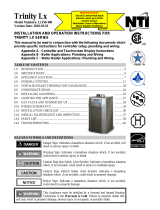 NTI Trinity Lx 150E Installation And Operation Instructions Manual
NTI Trinity Lx 150E Installation And Operation Instructions Manual
-
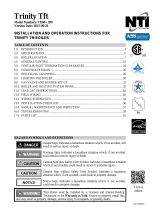 NTI Trinity Tft Tft399 Installation And Operation Instructions Manual
NTI Trinity Tft Tft399 Installation And Operation Instructions Manual
-
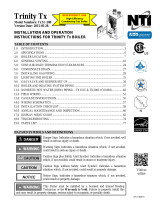 NTI Trinity TX151(C) Installation And Operation Instructions Manual
NTI Trinity TX151(C) Installation And Operation Instructions Manual
-
 NTI TRINITY Ts80 Installation And Operation Instructions Manual
NTI TRINITY Ts80 Installation And Operation Instructions Manual
-
NTI TFTN Series Operating instructions
-
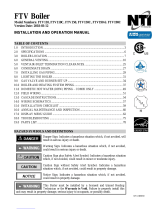 NTI FTV110 Operating instructions
NTI FTV110 Operating instructions
-
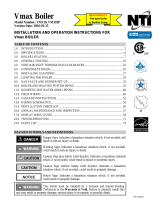 NTI VM110 Installation And Operation Instructions Manual
NTI VM110 Installation And Operation Instructions Manual
-
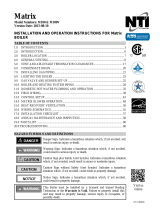 NTI Matrix M100 User manual
NTI Matrix M100 User manual
-
NTI HIGH User manual
-
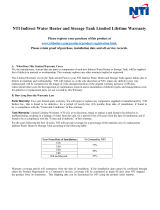 NTI Indirect Water Heater and Storage Tank User manual
NTI Indirect Water Heater and Storage Tank User manual
Other documents
-
Builders Edge 140057575030 Installation guide
-
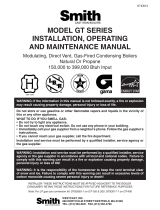 Smith Cast Iron Boilers GT Series User manual
Smith Cast Iron Boilers GT Series User manual
-
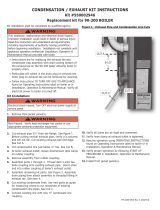 UTICA BOILERS UB90-200 Installation & Operation Manual
UTICA BOILERS UB90-200 Installation & Operation Manual
-
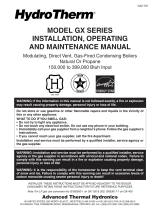 HydroTherm GT Series Operating instructions
HydroTherm GT Series Operating instructions
-
Slant/Fin J-390 User manual
-
Reznor RDDA Installation guide
-
Noritz GQ-C3260 User manual
-
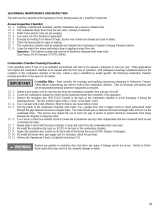 NY Thermal TI200 User guide
NY Thermal TI200 User guide
-
IPEX 197033 Operating instructions
-
Slant/Fin LYNX User manual































































































